Almost in the middle of nowhere, the 18 Faroe Islands lie in the inhospitable North Atlantic, halfway between Norway and Iceland.
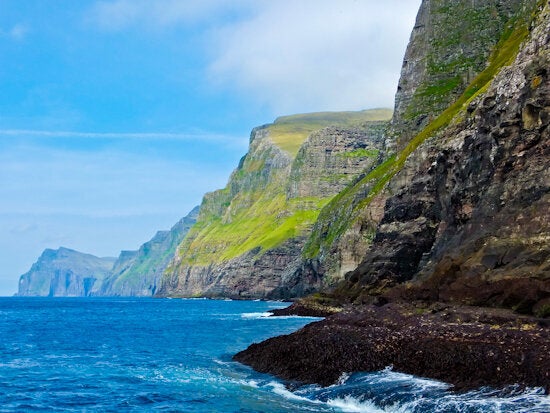
I've always wondered whether the places mentioned on the Shipping Forecast really exist - German Bight and Dogger, for example, so when an opportunity to visit the Faroe Islands comes up, I jump at the chance. I have to confess that, a few years ago, I visited the Shetland island of Fair Isle, 400 km to the south west, which was certainly not very fair, more wet and windy, so I prepare myself for the worst.
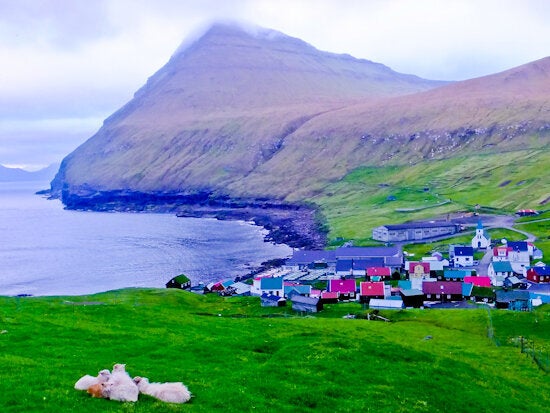
The Faroes lie northwest of Scotland, in the North Atlantic, and flying time is only two hours from London's Gatwick. As the plane starts to descend, I realise the 18 islands are just huge lumps of igneous rock, thrust out of the sea in some primordial eruption. They're carpeted in grassy moorland, but there are no trees, a testament to the appetite of the herds of sheep, that easily outnumber the 55,000 inhabitants, and the thin soil. In surprising sunshine, I land at the airport in Vágar, built during the British occupation in WW2 and it's around an hour's drive to the capital, Tórshavn, on the neighbouring island of Streymoy. I'm thinking I need to take a ferry but fortunately many of the islands are connected by tunnels, causeways or bridges.
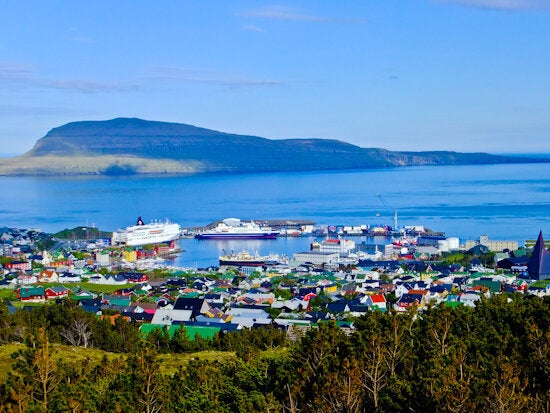
In the early evening I wander around Tórshavn and visit Tinganes, the site of the first parliament, where people came from all the islands to debate the issues of the day.
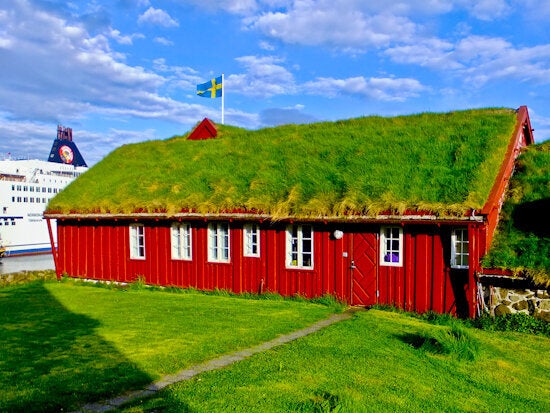
The original settlers were Vikings who arrived here over 1000 years ago, although the Danish took over in 1388. It wasn't until 1948 that the islands became self-governing, and now there's a movement for total independence - the greatest insult you can fling at an islander is to call them Danish.

Teams in Faroese wooden rowing boats are preparing for the Kappróður, the yearly rowing competition which takes place in July. Once, more of a necessity, rather than a sport, it was the only way of getting around the islands. They seem astonishingly tiny and flimsy alongside the huge inter-island ferries, moored in the harbour. I watch them from my room in the Hotel Føroyar and I realise that, in early June, it never really gets dark - I find myself opening the curtains sporadically throughout the night just to check.
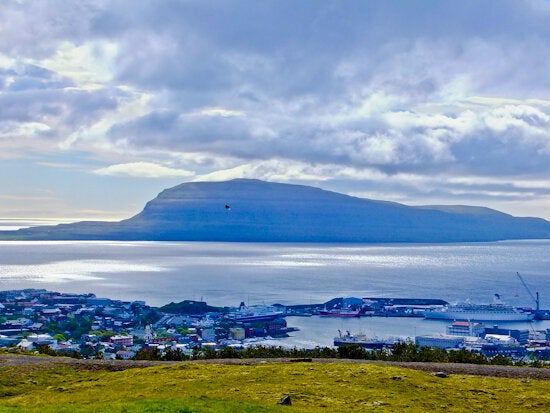
Next day the weather has reverted to type and, although it's not raining, I'm soon in the mist as I hike 10 km to Kirkjubøur, on the other side of the island. The trail is well marked and I arrive at the imposing ruins of St Magnus's Cathedral, abandoned when Lutheranism became the official religion in the 16th century. Next door is the grass-roofed Roykstovan, the world's oldest continually inhabited wooden house, home to 17 generations of the Paturson family. Johannes welcomes me and treats me to Faroese delicacies of wind dried fish, smoked lamb and whale blubber, adding a glass of the local aquavit to slide them down.
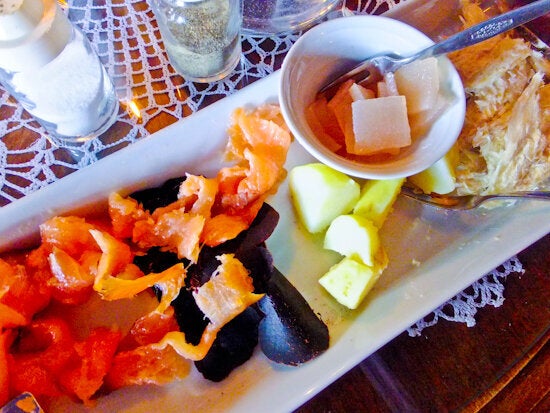
He tells me that the house is built with driftwood, since there are no trees, and the roof is a thin layer of bark, with turf on top, to keep it in place and provide insulation. A lawn above your head is a cool idea but does he have to mow it? Apparently some people do, but it's a pretty hazardous venture and the grass grows faster. Best left alone, is his view.
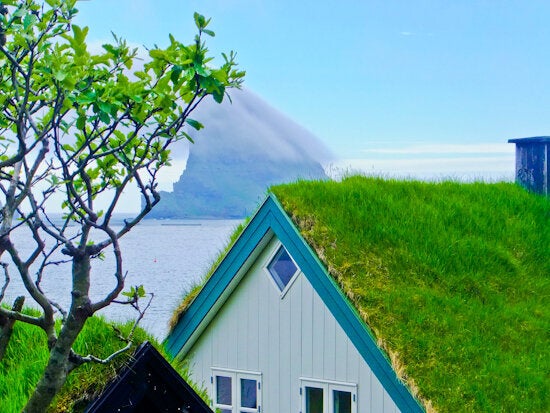
I learn how hard life was here when I visit Dúvugarður, hidden in the clouds - this is a house turned museum, with the rooms preserved as they've been for centuries. The smoke room was the focus of life - sods of turf took over a year to dry out, before they could be used as peat for the fire - on the menu was lamb, lamb and more lamb. Wool was the Faroese gold and, whilst the men tended the flocks, the women occupied themselves with spinning it, as well as preparing and smoking the meat. Evenings were for Faroese sagas around the fire and, with over 80,000 verses, there was no danger of repetition. In 1538 the Danes outlawed the language but it was kept alive by oral tradition, only being written down in the 19th century.

Myths and legends abound here and there's a strong belief in the Huldufólk or hidden people. They live inside boulders and, as you'd expect, only come out when they can't be seen. On Kalsoy there's a myth that beautiful seal girls throw off their skins and dance in the moonlight. One night, a farmer pocketed one of the skins so the seal woman had to marry him. Finally she found her skin hidden in a drawer and went back to being a seal, only to have the locals butcher her family . Her revenge was to kill as many fishermen who could be laid head to toe around the island's coastline.
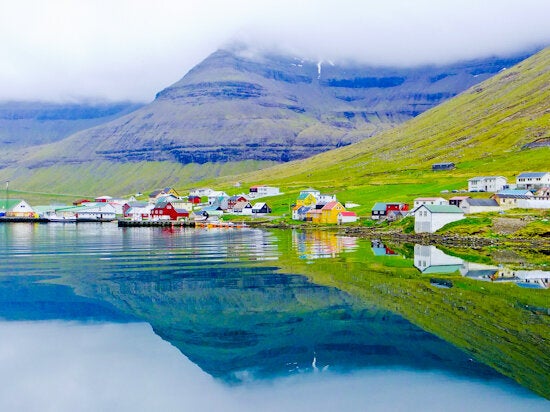
Of course the sea is a major influence in Faroese life and, fortunately, it's fairly calm when I take a boat trip round the bird cliffs near Vestmanna. Even so, the captain needs nerves of steel as he manoeuvres through narrow channels under the cliffs. We're surrounded by high stacks and sail into deep caves to observe the bird life nesting in the 500m cliffs.
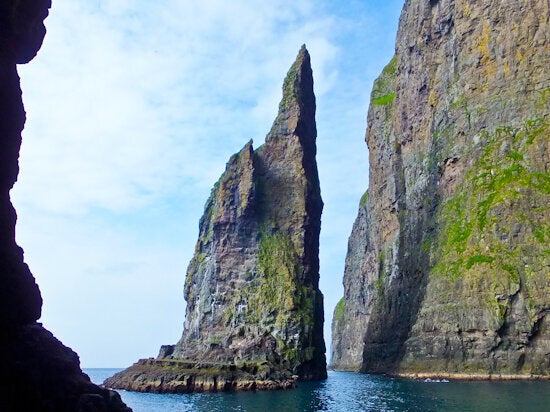
Apparently there are two million pairs of seabirds in the Faroes and I see Guillemots, Terns but only the occasional Puffin. The population seems to be in decline, much to the despair of Faroese chefs who regard them as a culinary delicacy. As there's not too much meat on the birds, they usually stuff them with a dough, mixed with raisins and spices before boiling or roasting them. Puffin isn't on the menu during my stay and it seems an excellent reason to return. Another would be to explore the many hiking trails peppered throughout the islands. Ultimately it might be the siren of the magnificent peace and quiet that lures me back.
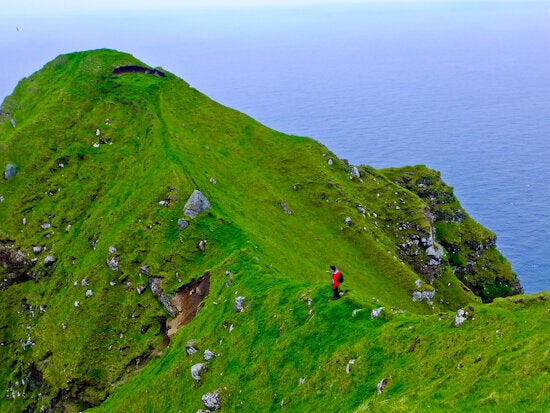
Visit Faroes has tourist information.
Atlantic Airways is the national airline of the Faroe Islands and operates a twice weekly summer service to Vágar airport from Gatwick. Flights run Monday and Thursday until September 12. Fares from £242 return.
Sunvil Discovery offers three and four-day holidays and longer breaks in the Faroe Islands.
Restaurant Aarstova, in Tórshavn, serves up excellent Faroese food.

All pictures copyright Rupert Parker.